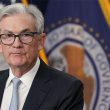by Liz Ann Sonders, Jeffey Kleintop, Kathy Jones, and Kevin Gordon, Charles Schwab & Company Ltd.
Meanwhile, notwithstanding decent headline economic growth numbers for the third quarter, leading indicators suggest a global recession may have started during the period. It appears to be mild so far.
U.S. stocks and economy: Labor cracks widen
Survey divergence

Source: Charles Schwab, Bloomberg, as of 10/31/2022.
Y-axis truncated at 5 million and -5 million. The rolling seven-month sum is the total number of jobs for the preceding seven-month period; rolling returns can be useful because they smooth past performance to account for multiple time periods, not just a single instance.
Confidence stuck in a rut

Source: Charles Schwab, SentimenTrader, as of 11/4/2022.
SentimenTrader's Smart Money Confidence and Dumb Money Confidence Indexes are used to see what the "good" market timers are doing with their money compared to what the "bad" market timers are doing and are presented on a scale of 0% to 100%. When the Smart Money Confidence Index is at 100%, it means that those most correct on market direction are 100% confident of a rising market. When it is at 0%, it means good market timers are 0% confident in a rally. The Dumb Money Confidence Index works in the opposite manner.
Fixed income: Higher for longer?
The futures market is discounting a higher peak fed funds rate and slower decline

Source: Bloomberg.
Market estimate of the federal funds rate using Fed Funds Futures Implied Rate (FFM2 COMB Comdty). As of 11/1/2022 and 11/7/2022, respectively. For illustrative purposes only. Please read the Risk Disclosure for Futures and Options prior to trading futures products. Futures accounts are not protected by SIPC.
The yield curve flattened to its lowest level since 1981

Source: Bloomberg. Market Matrix US Sell 2 Year & Buy 10 Year Bond Yield Spread (USCY2Y10 INDEX). Daily data as of 11/7/2022.
Note: The rates are composed of Market Matrix U.S. Generic spread rates (USYC2Y10). This spread is a calculated Bloomberg yield spread that replicates selling the current 2 year U.S. Treasury Note and buying the current 10 year U.S. Treasury Note, then factoring the differences by 100.
In addition, the dollar's 13% appreciation over the past year will likely help lower inflation. A strong dollar tends to reduce the cost of imports because each dollar buys more goods and services from abroad. At the same time, it tends to slow export growth as U.S. goods become less competitive. The strong dollar has also forced foreign central banks to tighten policy rapidly to support their currencies even in the face of slowing growth. The result has been a rapid global tightening cycle which potentially should help bring down inflation.
The U.S. dollar has strengthened over the past year

Source: Bloomberg, using daily data as of 11/7/2022. Bloomberg Dollar Spot Index (BBDXY Index).
Notes: Merrill Option Volatility Estimate (MOVE) is a yield curve weighted index of the normalized implied volatility on 1-month Treasury options. *2022 YTD average as of 10/5/2022.
Average hourly earnings growth is slowing down

Source: Bloomberg, using monthly data as of 10/31/2022.
US Average Hourly Earnings All Employees Total Private Yearly Percent Change SA (AHE YOY% Index).
Global stocks and economy: Global recession?
- North America: After two quarters of decline, the U.S. economy grew at an annualized rate of 2.6% in the third quarter, slightly above what economists tracked by Bloomberg were expecting. Mexico's economy rose a solid 1.0%, above the consensus forecast of 0.8%.
- Europe: The eurozone economy is now 2.1% above its pre-pandemic level, and in the third quarter grew at an annualized rate of 0.7%, slightly above the consensus expectation. All but three eurozone countries reported economic growth, led by upward surprises in Germany and Italy. The German economy grew at an annualized rate of 1.2%, which was well above economists' consensus expectation for a decline.
- Asia: China's economy was reported to have grown 3.9%, exceeding estimates. Although China's government-reported data is often viewed with skepticism, here it broadly aligns with what private-sector economic indicators have shown. In Taiwan, real gross domestic product grew at an annualized rate of 6.4% in the third quarter—well above expectations, with consumer spending and net exports leading a robust recovery.
Despite all this promising news, a global recession likely began sometime during the third quarter. A drop below 99 in an index produced by the Organization for Economic Co-operation and Development (OECD) tends to happen right around the start of a global recession, as shown in the chart below. Today, the indicator is below 99 and may be signaling another recessionary period.
Global leading indicators point to global recession

Source: Charles Schwab, Organization for Economic Cooperation and Development, Bloomberg data as of 11/3/2022.
Past performance is no guarantee of future results.
Global PMI slipped into recession territory in Q3

Source: Charles Schwab, S&P Global, Bloomberg data as of 11/3/2022.
Chart shows history of 13-member OPEC production. A larger group called OPEC+ was formed in late 2016 to have more control on the global crude oil market.














